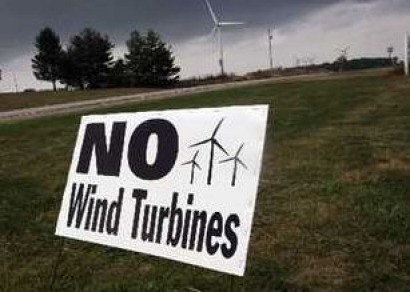
Wind farm projects in Staffordshire County, UK have been delayed due to community resistance. Wind farms would serve as a good renewable energy source for the region, but the community feels the development would harm their rural communities and prevent tourism. The community concerns have now reached the government and the project has continued to be stalled.
In Dennis, Massachusetts members of the community oppose the wind energy project currently going on. Though the wind farm creates a viable source of renewable energy, many residents complain about the noise of the wind turbines, and would like them shut off at night or altogether.
In Bedminster Township, New Jersey solar projects are being delayed because of opposition from the local residents. The community fears that covering a local farm with solar panels will harm the natural resources of the area and destroy the rural feel of the region. The developers of the project say that the solar energy produced annually would be equivalent to the amount of electricity for 1,053 homes. Though solar energy has many benefits, the community continues to resist the idea because of the change that would happen to the town landscape.
Solar projects in California have been delayed and fought for years by community members. Many people who live in the desert do not want the solar panels there because they do not think of the desert as empty space, but as their land and many people farm plants there. Solar energy is quiet and clean, but the community members still feel the panels will affect their lives.
The US Chamber of Commerce put into action an initiative called Project No Project, which looks at energy projects being delayed or stopped entirely due to NIMBYism. Project No Project has projected that in the short term the 351 projects the group looked at could produce $1.1 trillion for the economy and create 1.9 million jobs a year. Also once these projects are created and established, they are estimated to produce $145 billion and create 791,000 jobs.
By now it is apparent why hiring a good public affairs firm from the get go is fiscally sound; an upfront cost of a few thousand dollars can be a small price to pay for the hundreds of thousands if not millions of dollars in expenses that could result from delays due to public opposition. Working on a grassroots level, a public affairs firm can foster trust and forge lines of communication between clean energy companies and their public. As a result, the public is better informed about the benefits of the project, the opposition is neutralized, and support is generated for the clean energy company.
In addition to providing strategic planning and issue management, a knowledgeable public affairs firm brings valuable tactics to the table. Sometimes a simple approach is all that it takes. Here are some examples of best practices:
Announce your proposal wisely – when announcing a project, have a few pieces of direct mail ready to hit all the households in the host community to spread the positive benefits of the project. Follow this up with newspaper web ads, and phone banking of the community, to again, further indentify supporters. Too often companies allow precious time between announcing a project, and disseminating information to the community.
Meet with identified supporters – once you have a database of supporters built from the mailers, ads and phone calls, the developer should meet with them so that they know they are not alone in their support, and they are a grassroots force that can begin to write letters to public officials, the newspapers, and attend key public hearings and speak out. Rarely will a supporter write a letter for you or attend and speak at a public hearing if you have not had the face to face contact with them previously.
Build "grasstops" support – In addition to reaching out to residents, stakeholders and well known members of the community, one should also meet with businesses, associations, and other civic groups should to attempt to bring on them board for support.
Keep an updated database – As you begin to identify supporters of your project, that information should be put in a database to refer to throughout the entitlement process of your proposal. Coding your supporters by local legislative districts can also help if you need to target a particular local legislator who may be wavering in support.
The key goal of these types of campaigns is to never allow the opponents an opportunity to seize the moment because of inaction by the developer. Just announcing a renewable project is not enough to assume that everyone will be on board to support it.
By running an aggressive campaign and identifying supporters, you have taken a key step of any successful campaign. Knowing what to do with the identified members of a community who support your project is the next step, and one that will allow vocal support to outnumber opponents – whether it be petitions, letters or crowds at public hearings.
I tend to agree with Christina regarding organized NIMBY activities by inteterested parties. People protest only as long as their daily life is not affected. Are these NIMBY activists ready to reduce their energy consumption by the amount equivalent to that will be produced by the clean technology - Solar, Wind etc.?

